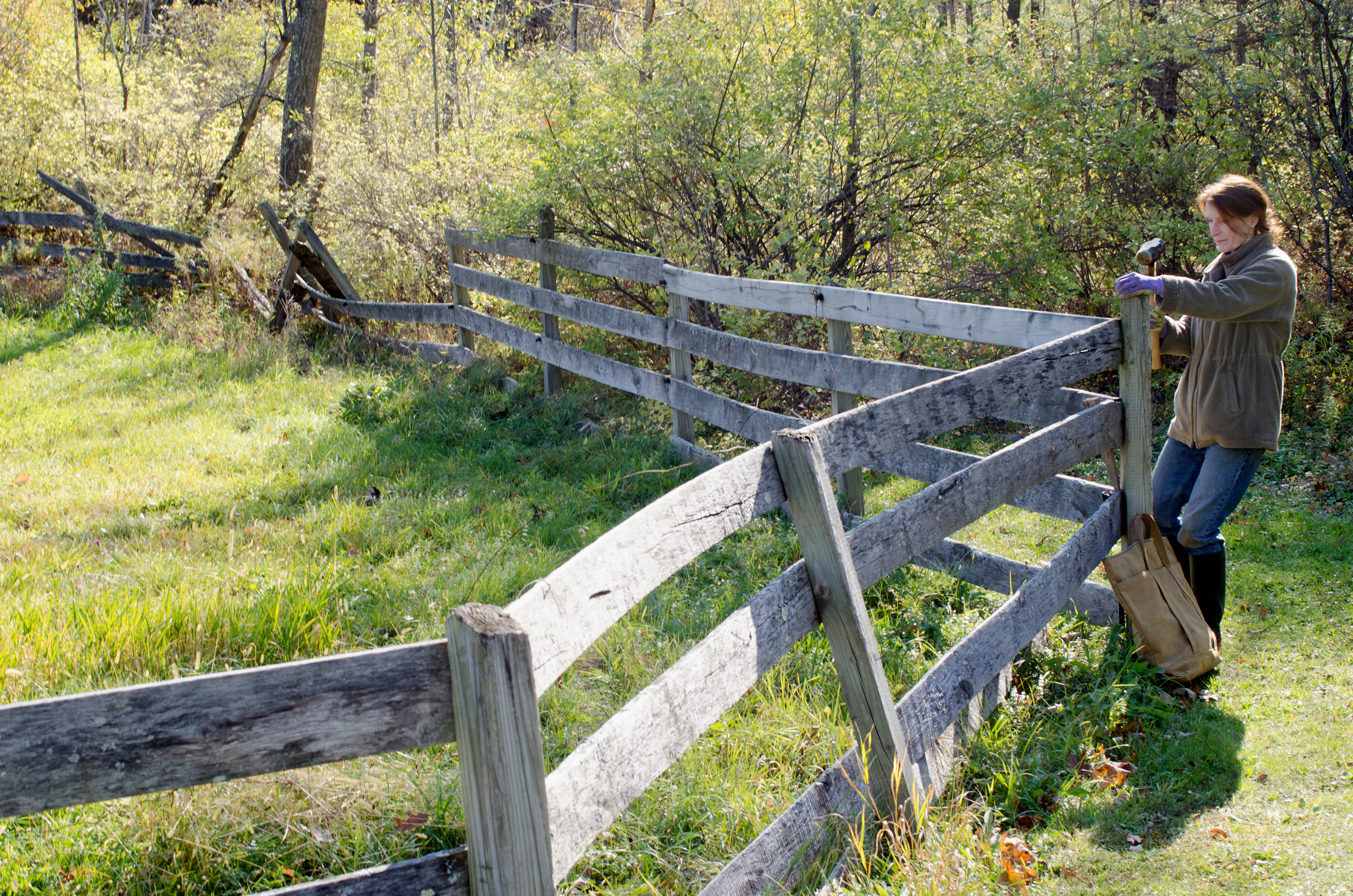
Safe and user-friendly facilities are crucial to any horse farm or stable. This is generally a work in progress because all facilities need maintenance, and they often need continuing improvements to become what you want. In this article we will talk to Heather E. Lewis AIA, NCARB (American Institute of Architects, National Council of Architectural Boards), who is affiliated with Animal Arts architectural firm that specializes in equine, small animal and veterinary facilities to get some ideas on horse farm maintenance and improvements.
Fences
Lewis said when she is talking with clients about their facilities, she recommends that they start with fencing, since adequate fences are so important for the safety of horses and livestock.
Check all fencelines and inspect for damage, loose wires, broken posts, etc. and repair those first. “Then look to see what caused the damage to prevent it from happening again,” said Lewis. “For example, did the fence get damaged because the horses leaned against it in that spot? If so, that section of fence might need to be replaced with more durable fence, or reinforced with a hot wire in that location.”
Sagging gates are hard to open and close and will sag worse if ignored. “The post at the hinge side of the gate may need to be dug out and redone,” suggested Lewis. “Once you fix the gate, place a block of concrete, wood or a wheel under the latch end of the gate to prevent it from sagging again.”
If a fence is dangerous, upgrading it should be a priority project. “Dangerous fencing includes uncapped T-posts,” said Lewis. “These are potential safety risks; horses or livestock may impale themselves on posts. T-posts can be capped in the short term, and you might consider replacing them later.”
When discussing types of fencing for horses, Lewis said, “Barbed wire might be OK for cattle, but not for horses; their skin is too thin and barbed wire can do a lot of damage.
“Also, fencing that is so old and in such disrepair that it’s not possible to keep horses contained anymore should be replaced.”
For more information on fencing, check out the article Horse Farm Fencing Choices, Design and Construction.
Buildings
If your fencing is in good shape, look at structures, including barns, run-in sheds, etc. “Most owners looking to upgrade their farms start by sprucing up their barns,” said Lewis. “Things do start falling apart and need major maintenance after a while. First assess the buildings for structural stability. Are they straight and square, or have they sagged or leaned to one side? If you notice anything about the overall structure that is not its intended geometry, have it evaluated by a structural engineer or contractor.”
Check the roof. “Beyond the basic structure, the roof is the most important element for longevity of a building,” said Lewis. “If the roof is coming apart and letting in water, repairing it should be a priority ahead of any repairs to the walls.”
Check the electrical system. Review the electrical system for code violations and safety hazards, such as ungrounded circuits. An electrician can evaluate the wiring and suggest upgrades, if needed.
Check the paint. Is the building well-painted? When paint gets old, it can start peeling/flaking off, then the material underneath starts deteriorating. “As enlisted men in the Navy say, ‘If it moves, salute it. If it doesn’t move, paint it.’ Keeping paint on a structure will improve its overall longevity. Take some photos and show them to employees at a paint store to get advice about what paint to use and how to prep for best restoration and protection.”
Check inside structures. Check inside stalls and make an inventory of required repairs. “Fix items immediately if they pose a safety risk. These may include fixing sharp edges, broken and splintered wood, etc.”
Amenities
Once you’ve taken care of the basics for safe fencing and well-maintained structures, consider remodeling your tack room. “This is the equivalent to remodeling your closet at home; it is immensely satisfying to have a nice, clean, organized space,” said Lewis. “Add or upgrade the barn bathroom. If you add a bathroom, the biggest challenge will be the waste line; a contractor can help you determine the feasibility of this endeavor. Upgrade the lounge (or add one) and/or make a kitchenette for boarders and employees to use.”
Upgrade barn and arena lighting. “You’ll likely get more light and less energy cost from this project, because new lights are more efficient than older ones,” Lewis said.


